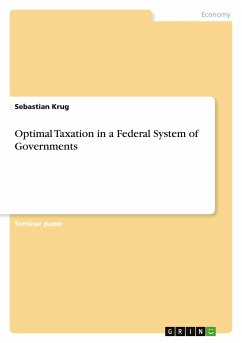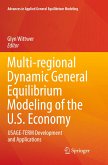Seminar paper from the year 2011 in the subject Economics - Finance, Christian-Albrechts-University of Kiel (Department of Economics), course: Seminar in Public Economics and Social Policy: Federalism and (De)Centralization, language: English, abstract: An implemented tax system causes distortions which leads to a minor overall welfare level compared to a system without taxes. This deviation in social welfare is often denoted by excess burden or dead weight loss (DWL) of taxation. So the traditional optimal taxation approach comprises the implementation of a tax system which minimizes the excess burden and hence the distortions caused by the levied taxes. Therefore, the policy maker has to anticipate possible behavioral adjustments of the market participants when choosing its optimal tax policy. Assuming the policy maker will do so all effects (i.e. distortions) caused by the tax system will be internalized which means that no fiscal externalities would arise from implementing the (optimal) tax system. However, the traditional optimal taxation approach abstracts from any intergovernmental relations as the existence of only one government and accordingly only one level with fiscal jurisdiction is assumed. The question here is whether and to what extent federal structures (i.e. multileveled government structures) affect the optimal tax policy decision.The first attempt to take into account the characteristics of a federal systemrelated to optimal tax policy goes back to Gordon (1983) who applied the methodologyof the traditional optimal taxation approach to fiscal federalism. Therein eachunit of government (i.e. the federal and usually several state governments) decidesindependently how much of public goods to provide and in particular which taxpolicy to use in funding the provided public goods. Hence, we now consider a decentralizedform of decision-making in which each unit of government chooses theoptimal tax policy in the best interest of its own residents. As a consequence of thissolely intrajurisdictional externalities are internalized analogous to the traditionaloptimization approach. Though, it isn't obvious whether this solution is also optimalin the sense of an inter jurisdictional point of view. Sobel (1997), Wrede (1999)and also Keen/Kotsogiannis (2002) stated that a common pool problem emergesgiven that subordinated governments (i.e. state governments) are allowed to levytaxes as well as the federal government. This means that taxation at multiple levelslead to a shared tax base which is the fiscal analogue to the common propertyresource. Due to this overlap in tax bases any separately considered optimal taxpolicy at a certain level may affect the optimality character of the ...








